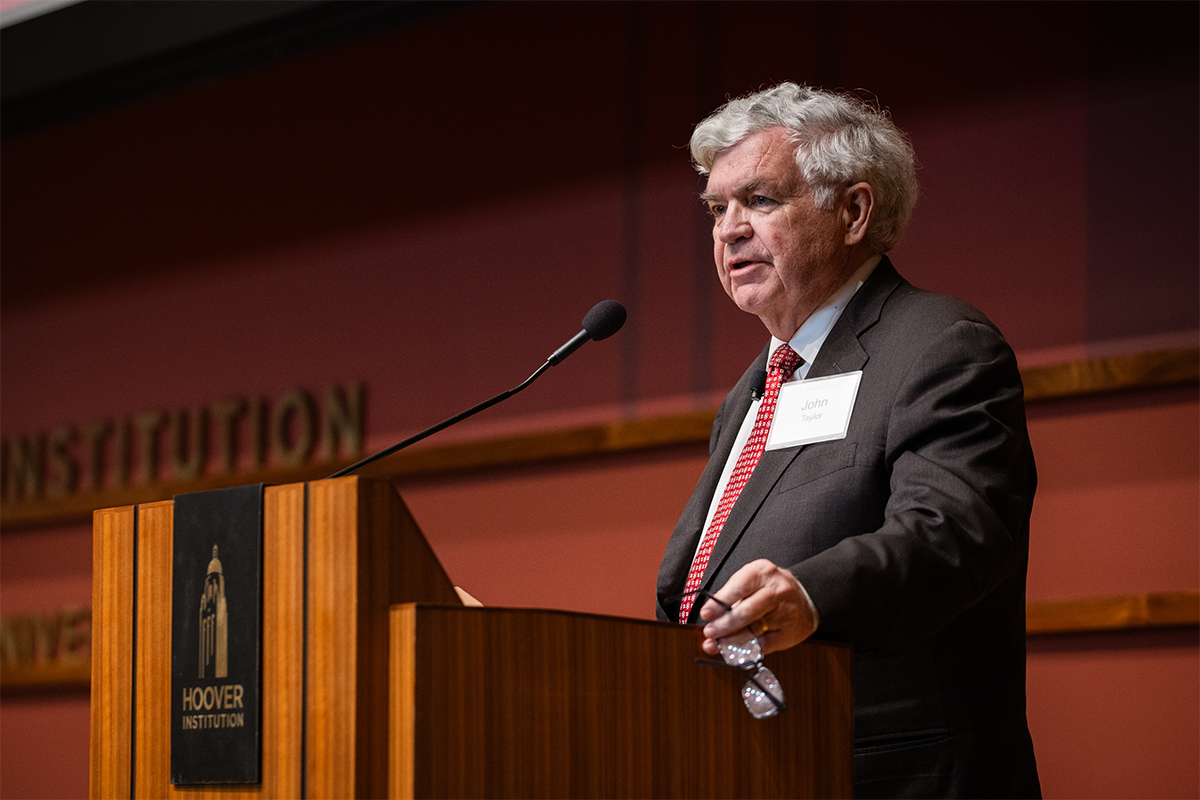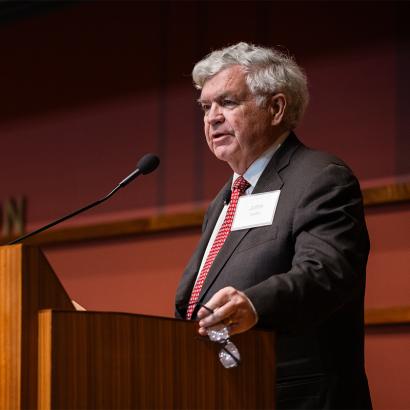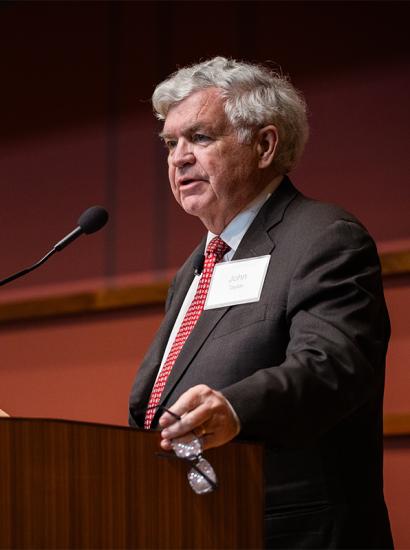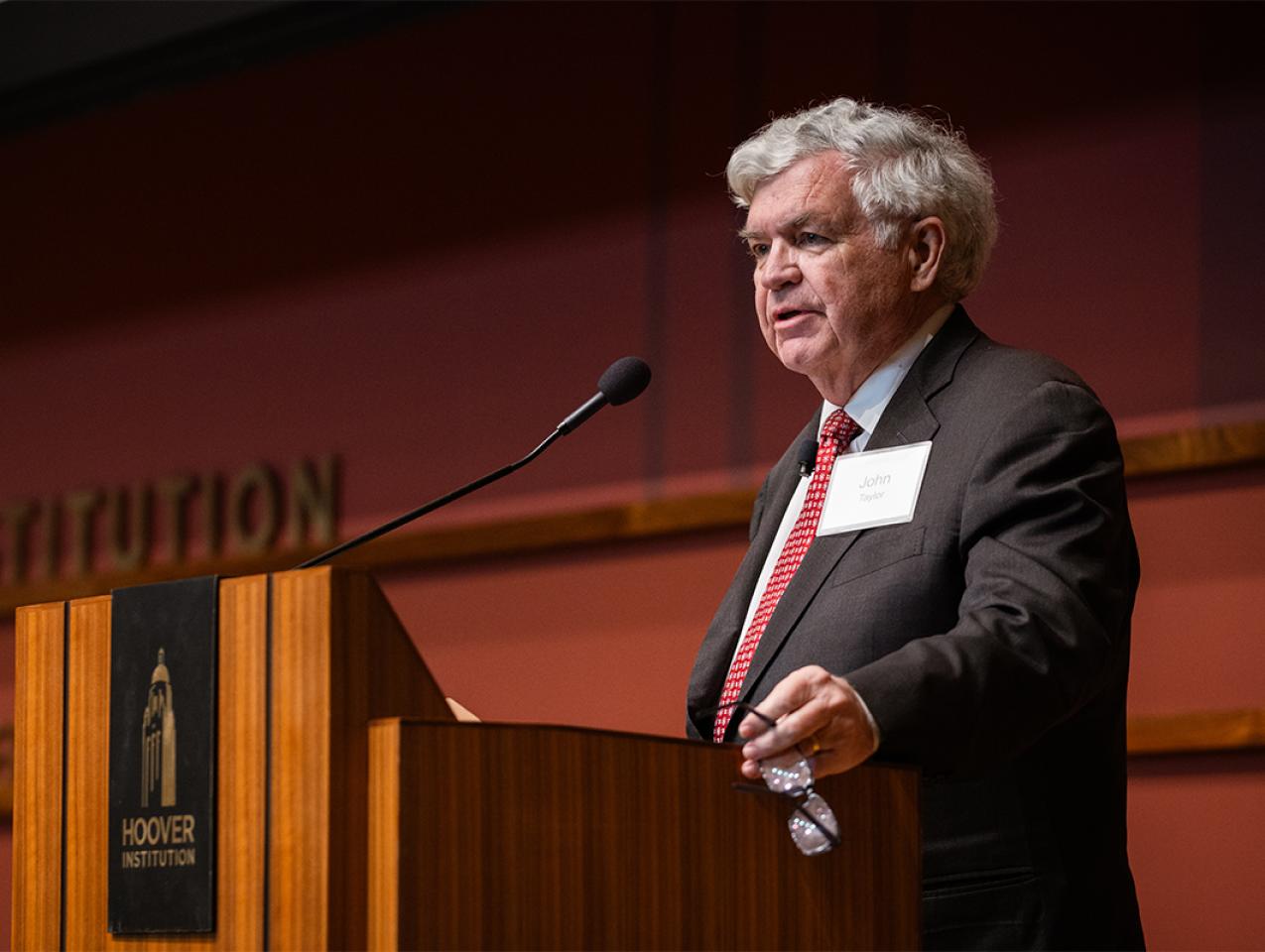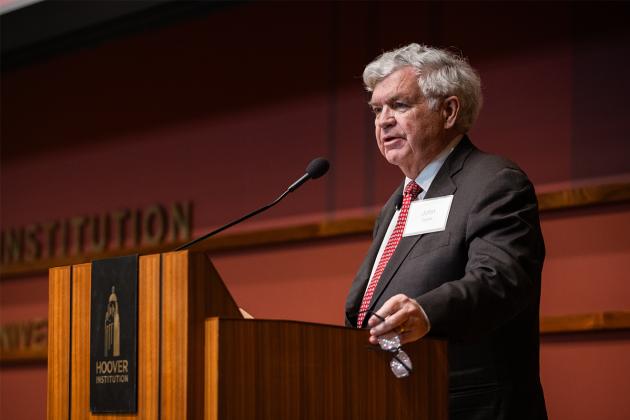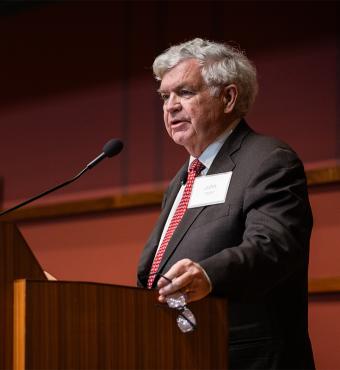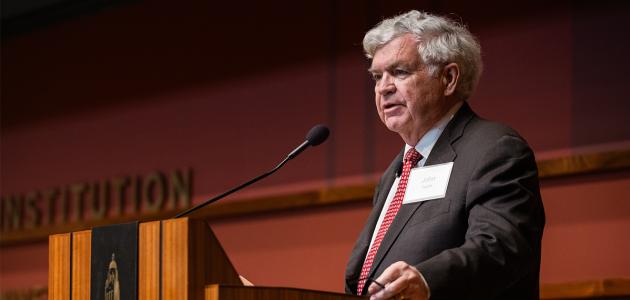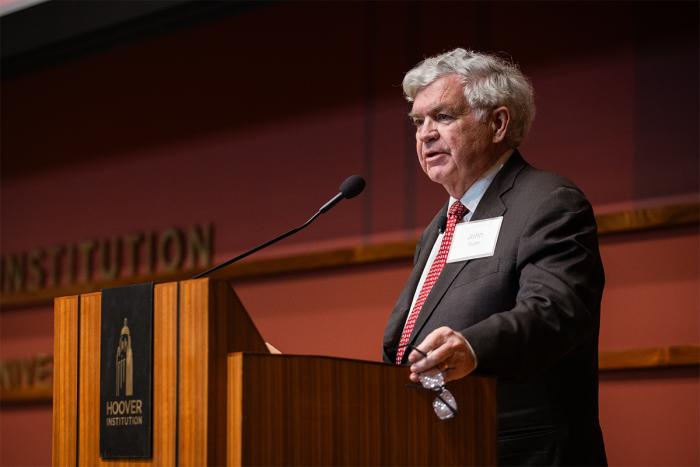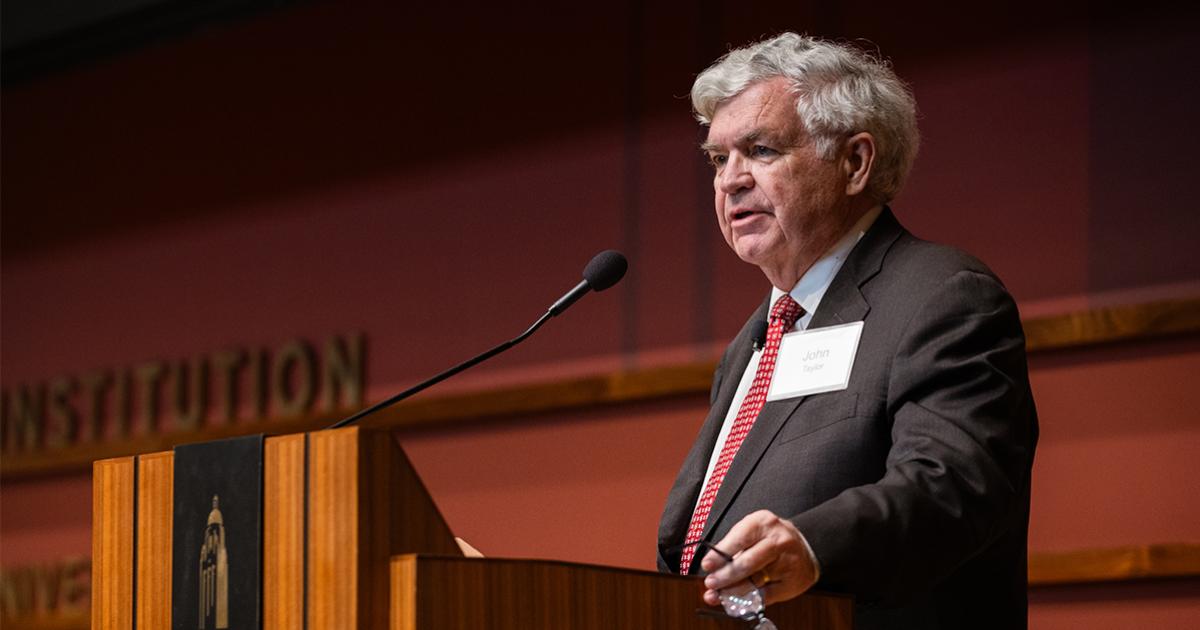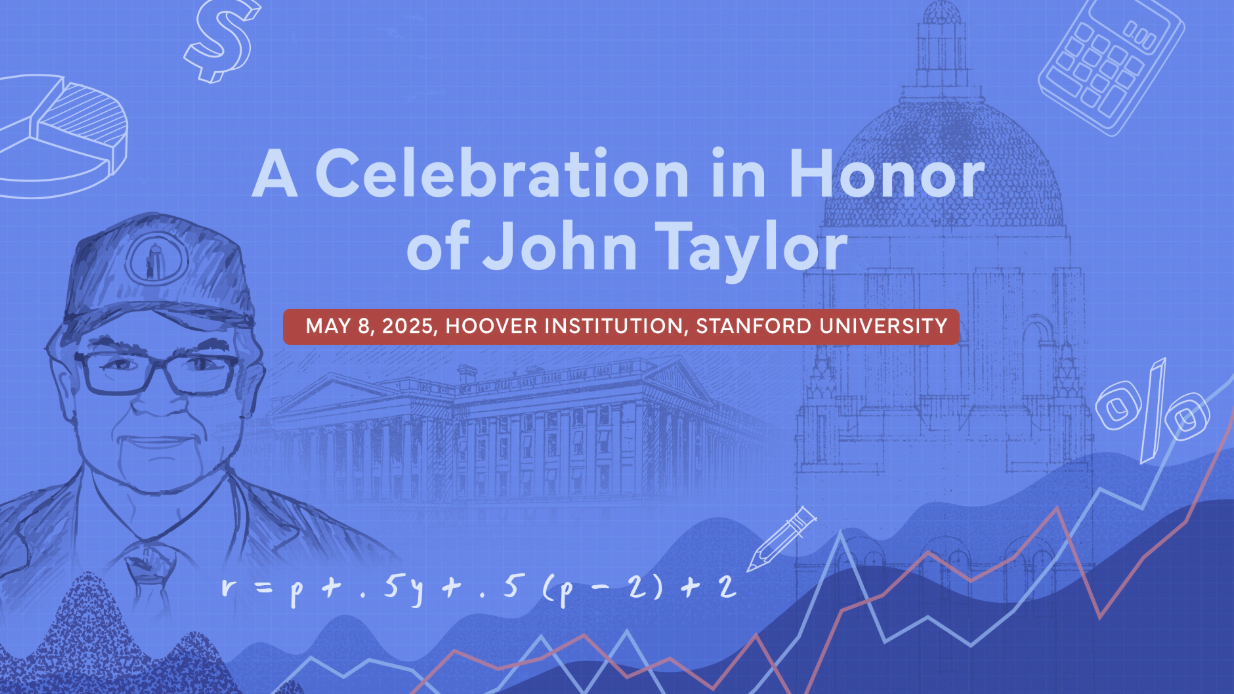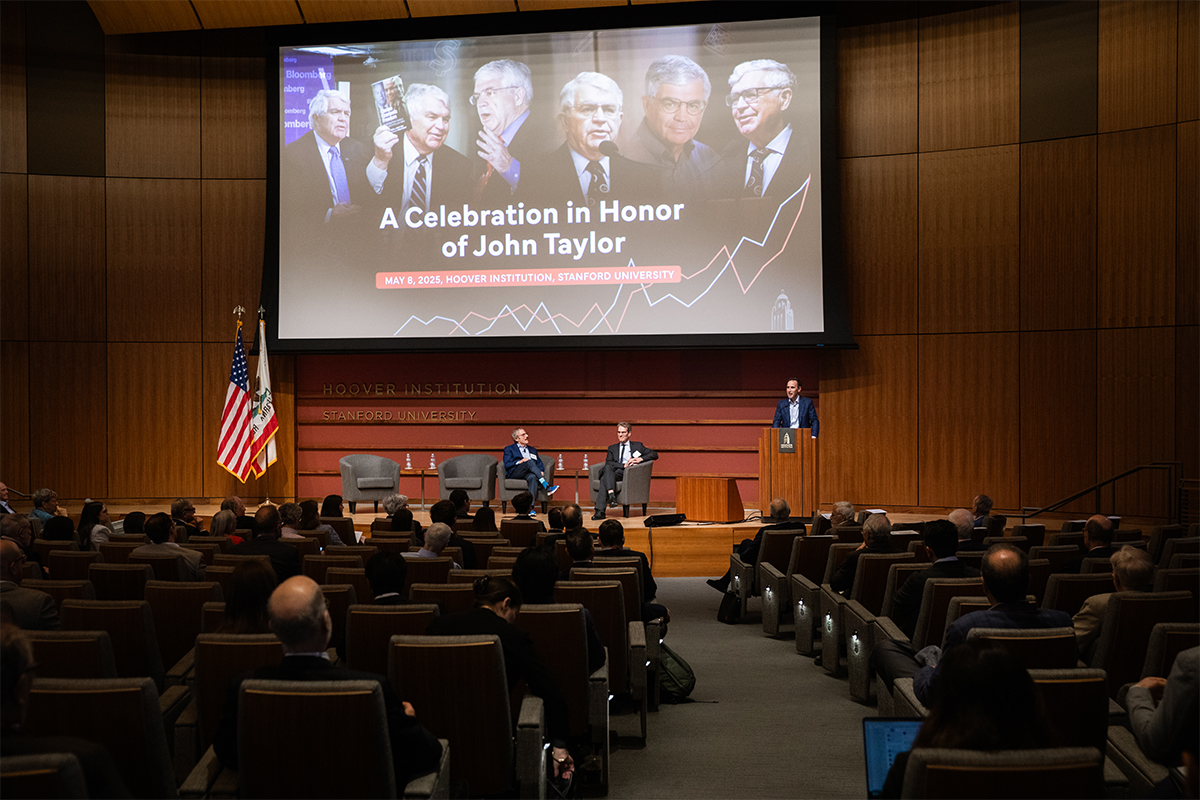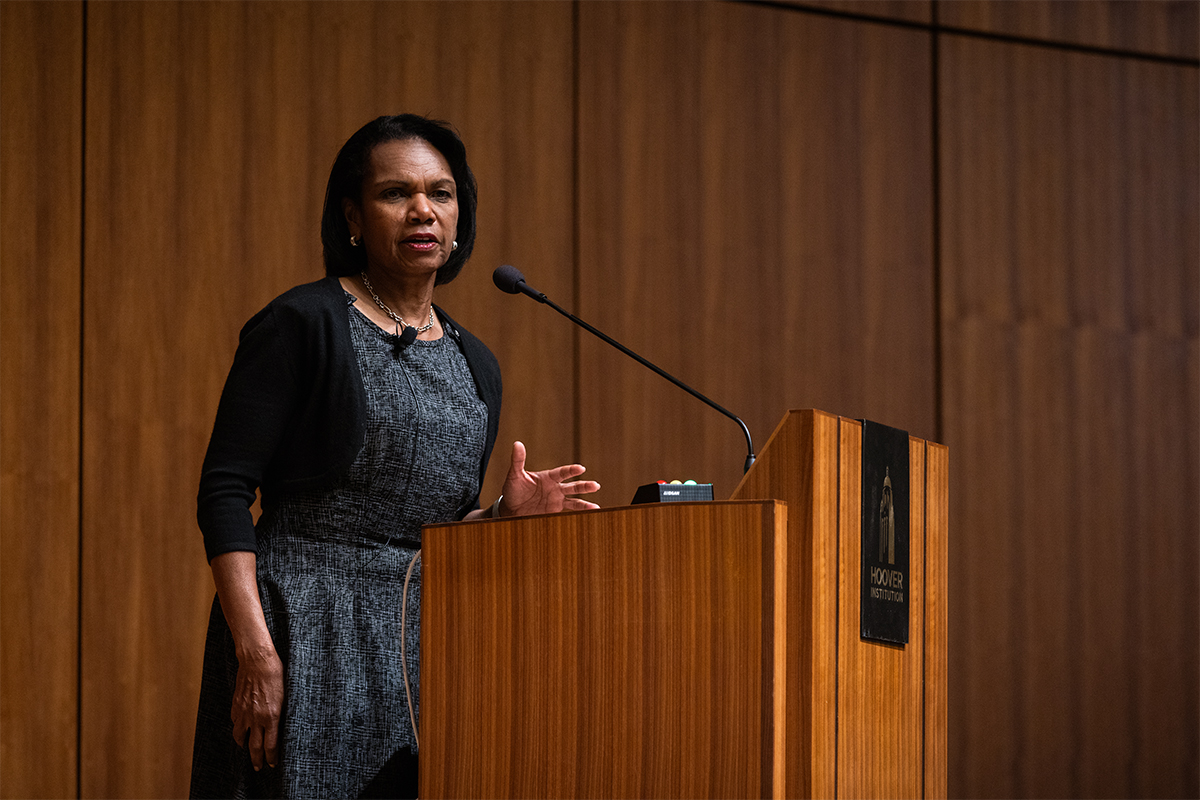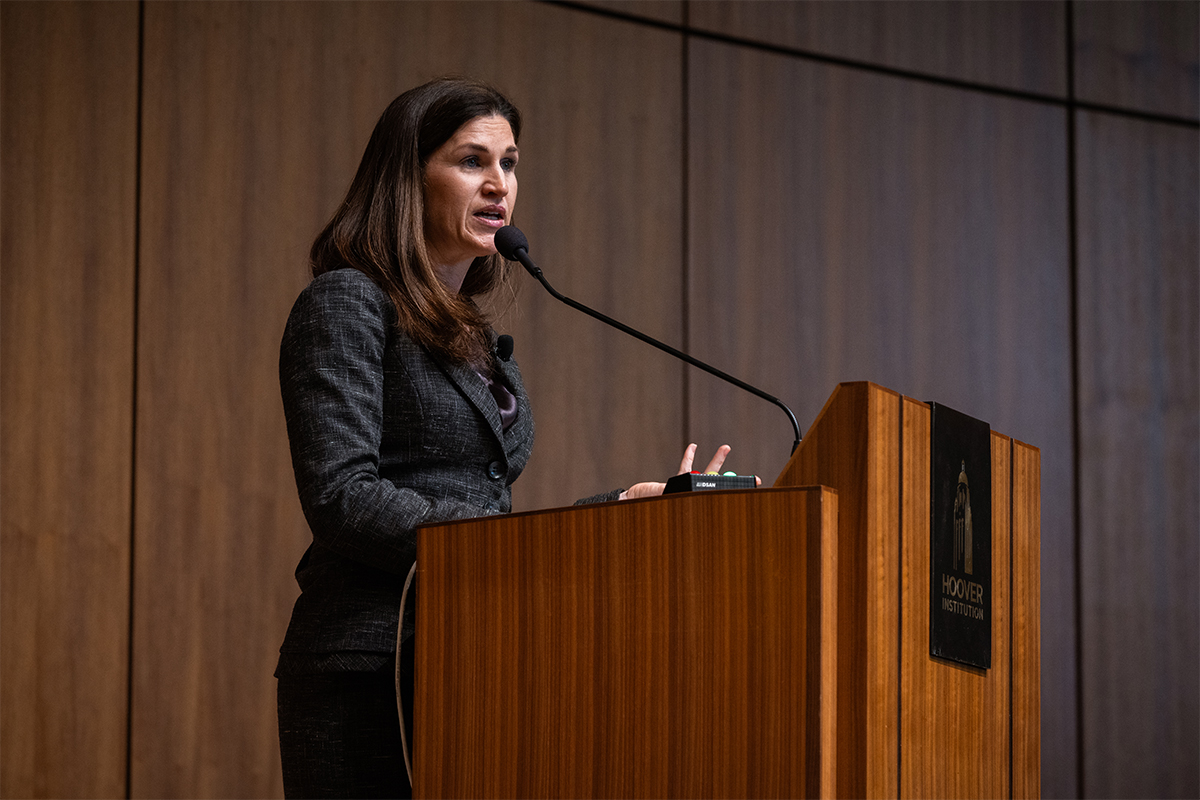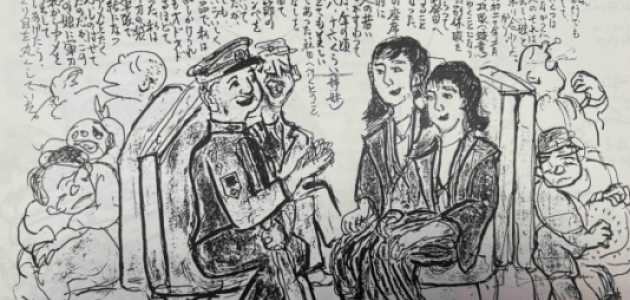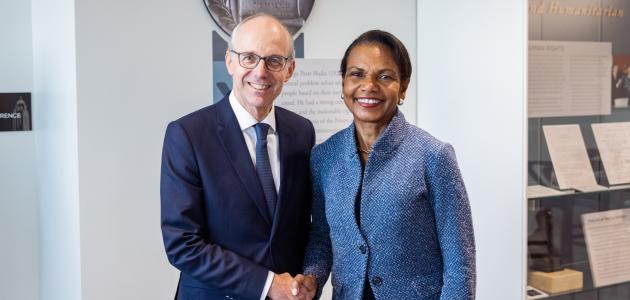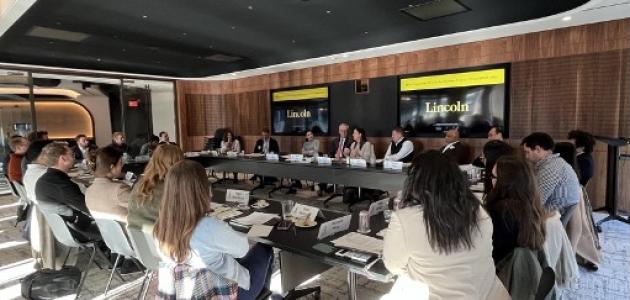Hoover Institution (Stanford, CA) — Economists from around the world gathered at the Hoover Institution on May 8, 2025, to honor John B. Taylor, an internationally renowned economist and driving force behind rules-based monetary policy, who can now claim more than fifty years of scholarship in the field.
Taylor is the George P. Shultz Senior Fellow in Economics at the Hoover Institution and the Mary and Robert Raymond Professor of Economics at Stanford University. An award-winning teacher and researcher, he served as senior economist on the President’s Council of Economic Advisers from 1976 to 1977, as a member of the Council from 1989 to 1991, and as under secretary of Treasury for international affairs from 2001 to 2005.
His most celebrated contribution to the field of monetary economics has become known as the “Taylor rule.” Expounded in an influential 1993 article, the rule provides a formula that ties a central bank’s key overnight lending rate to the current rate of inflation and economic growth. It provides a benchmark for monetary policy evaluation that Taylor showed produces much improved economic outcomes.
As numerous speakers emphasized, that rule, along with several other groundbreaking contributions by Taylor, have had a lasting impact on the field, in academia and especially in the practice of monetary policy at central banks.
The tributes came from several leading authorities on monetary policy in the world today.
In a letter read to the audience by Hoover Senior Fellow Michael J. Boskin, Federal Reserve Chair Jerome Powell said Taylor’s work has inspired and guided generations of economists.
“Policymakers around the world and the entire economics profession have benefited from your path-breaking contributions,” Powell wrote. “In the world of monetary policy, the Taylor rule has become an international benchmark in the practical analysis of central banks’ interest rate policies.”
“On behalf of the Federal Reserve,” Powell continued, “I’d like to thank you for your outstanding achievements in academic research, teaching, and public service.”
Federal Reserve Governor Christopher Waller told attendees that a single sentence penned by Taylor in a journal article in 1983 guided as much as twenty years of Waller’s career as a central banker and economist.
“As I read that sentence, I thought, How does society build credibility into the institution instead of relying on the credibility of an individual? That one sentence that John wrote in 1983 set me off on a twenty-year journey studying central bank design,” Waller said.
Less publicized but perhaps even more important has been Taylor’s public service. Hoover Institution Director Condoleezza Rice recounted Taylor’s contributions addressing multiple challenges.
“Whether taking the dinar to Iraq, creating the terrorist financing resolution at the UN Security Council or deciding that yes, we could do more for Poland, John was trusted by the president, by his colleagues, by foreign governments, and by our allies,” Rice said.
“John, I loved working with you in government. I am glad we’ll never have to do it again,” she quipped.
Stanford President Jonathan Levin recounted arriving at Stanford in the summer of 2000 to join the economics faculty and immediately receiving an invitation for he and his wife to come to the Taylors’ house for dinner.
“It was immediately clear, just from the first month I had at Stanford, that John was someone who was going to be kind and generous, and supportive, and indeed he has been for twenty-five years,” Levin said.
Taylor’s daughter, Jen, took to the podium to speak about her dad’s early life; how he originally intended to study physics at Princeton, switched to economics, was lured to Washington, DC, and then came to Stanford in 1984.
“Dad, congratulations on an extraordinary career and success, and thank you for being the best kind of teacher and the best father—one who leads by example. I'm so proud of you, and I love you very much,” she said.
For his part, Taylor warmly thanked the Hoover and wider Stanford community for giving him a place to grow, thrive, and share.
“These places have been more than where I’ve just worked,” he said. “They’ve been my home in many respects. They’ve given me the freedom to follow ideas wherever they lead, the colleagues to challenge and inspire me. And the students who constantly remind me why this work matters.”
“I can’t imagine a more rewarding place to have spent my career.”
Participants in the tribute later gave presentations that grappled with unprecedented challenges such as historic debt levels, the future of digital currency, and global great-power competition. The insights shared at this Hoover Institution conference underscore both the stakes and the complexity of monetary and fiscal policy in the current era.
Read more about Finishing the Job and New Challenges here.







